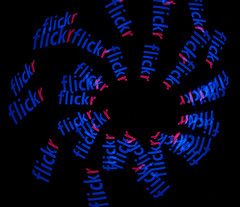Welcome – about this site
Hi, and welcome to Let’s Talk – From Conversation to Collaboration. I’ve created this blog as part of an assignment for a Massey University paper – 157.240 Social Media for Business Networks.

Image via Flickr by ocean.flynn
We’re learning that networks are about communication, cooperation, collaboration and connection. To study social networks effectively, it makes sense to engage – to make the learning an ongoing conversation between classmates, our tutor and even a wider audience, should anyone stumble across this blog. In this way, not only are we learning the theory about the primary functions of social networks and about the social software that supports them, we’re developing our own online community, forging new connections, communicating our ideas and cooperating with one another by visiting and commenting on classmates’ blogs. As we become more familiar with the tools and with our own online voices and our community becomes stronger, who knows, we may even begin to collaborate, to create conversations, to use one another’s knowledge and experiences to provoke thoughtful discussions, working together to create new ideas and inspire innovative solutions.
My focus will be on a particular interest area of mine – how and why to open up social channels within an organisation and exploring potential benefits and barriers. It’s not just about getting to know your colleagues; shared knowledge and learning opens up opportunities for innovative new solutions and that provides benefits for both the organisation and its customers.
What I’d really like to do is create some conversation and collaborate on ways to overcome any barriers to participation, and look at key motivators to inspire people to connect.
The great thing about blogging about these topics is that I don’t have to pretend to have all the answers; that’s the whole point really, is that we can all pitch in and learn from others’ ideas and experiences.
Note: Images used on this blog are attributed to the image creator. Images with no attribution are the blog author’s. I had some help with the blog header image – if you haven’t visited word cloud generator Wordle yet, check it out.



